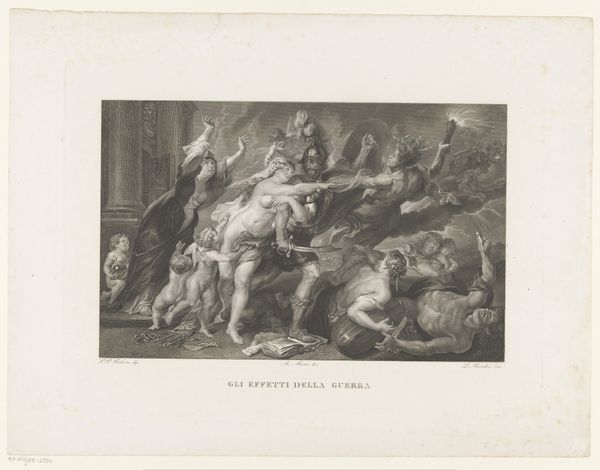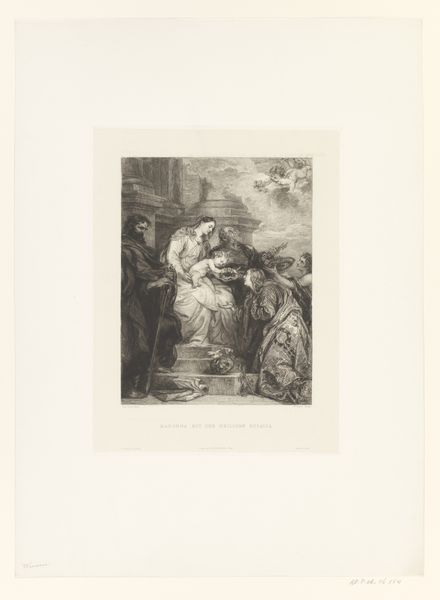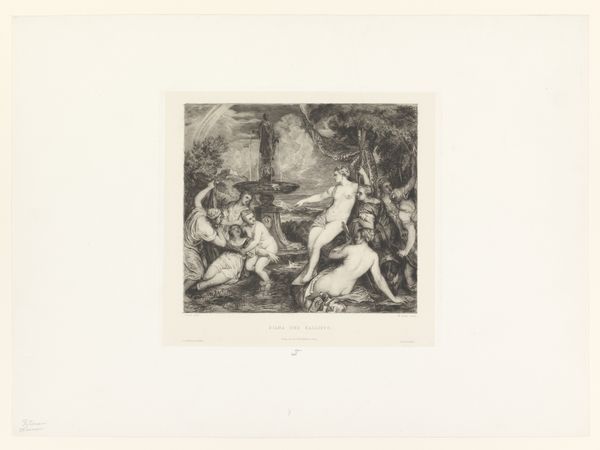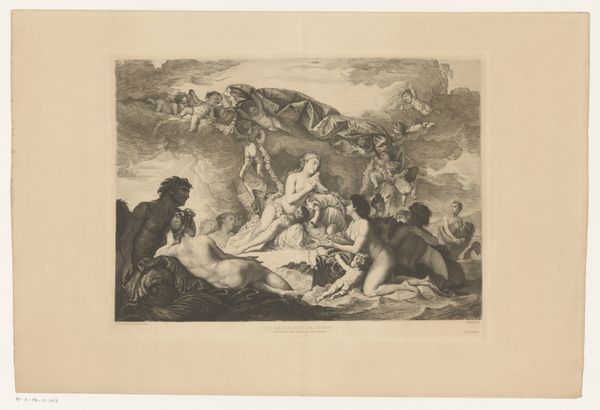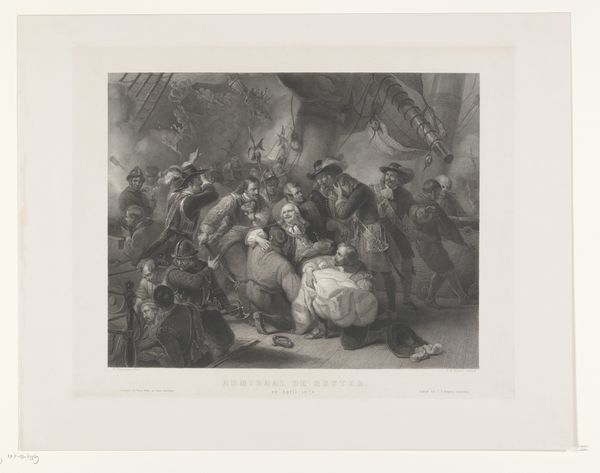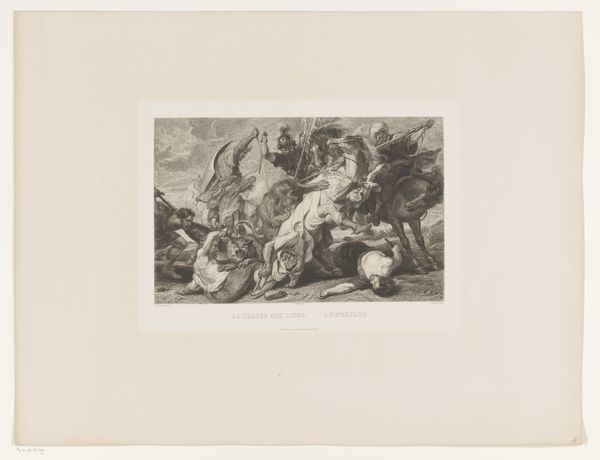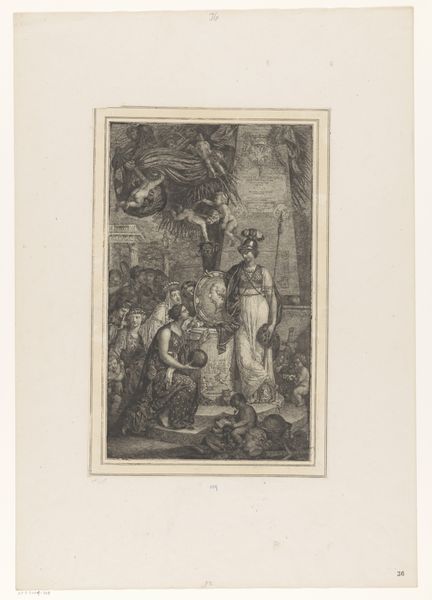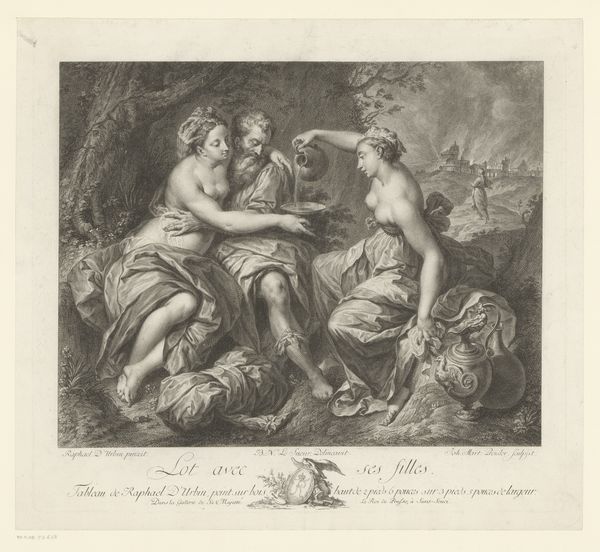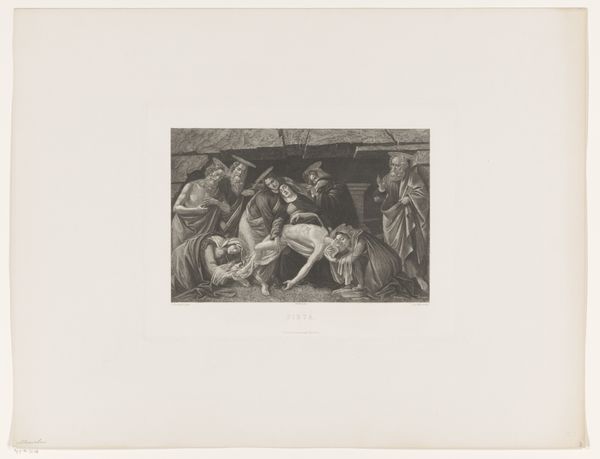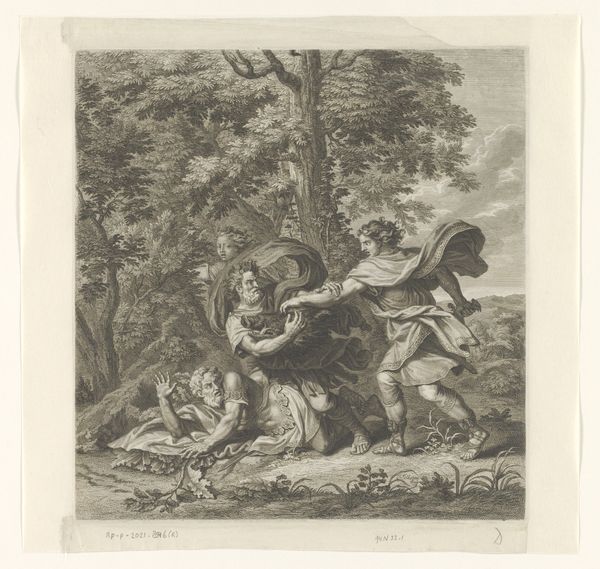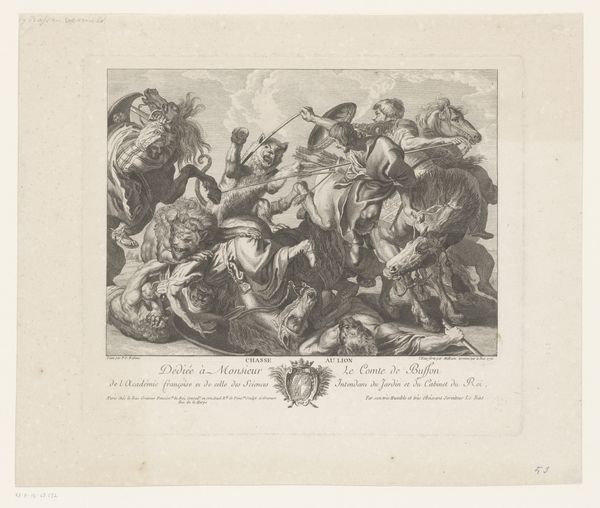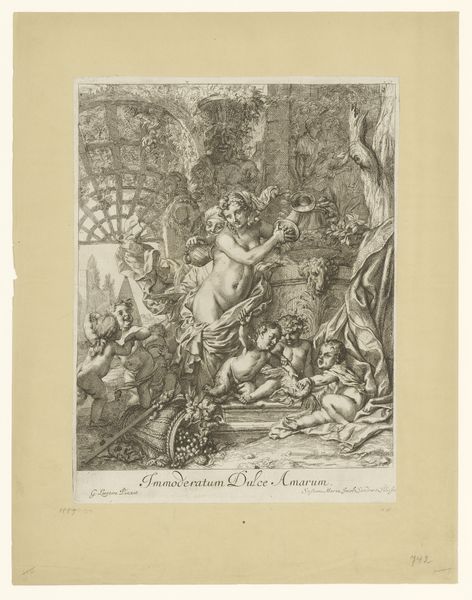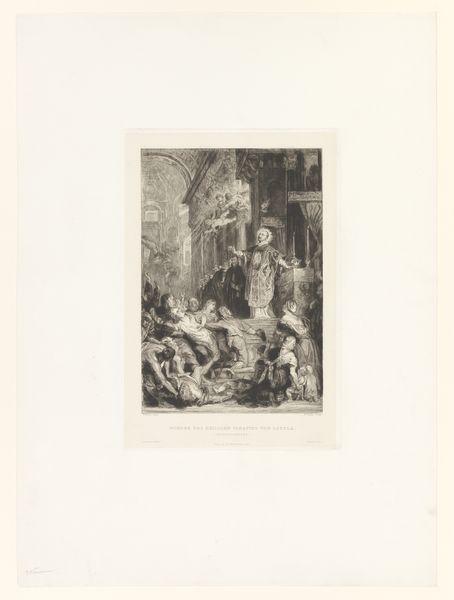
Dimensions: height 307 mm, width 430 mm
Copyright: Rijks Museum: Open Domain
William Unger etched this print, Simson en Delila, here at the Rijksmuseum. The moment captured reveals Delilah betraying Samson by cutting his hair, the source of his strength, as Philistine soldiers descend upon him. This betrayal is palpable through the motifs of vulnerability and deceit. The cropped hair, rendered as a token of trust turned weapon, echoes through centuries—from classical depictions of sacrifice to modern symbols of lost power. Delilah’s gesture, ostensibly affectionate, carries the weight of treachery, a leitmotif that recurs in art history with figures like Judas and Clytemnestra. Consider the psychological depth: Samson, the mighty warrior, reduced to helplessness by the very person he loves. The image taps into our primal fears of betrayal and the fragility of strength. This emotional resonance is why the story of Samson and Delilah continues to inspire artists and captivate audiences. Its themes of love, betrayal, and the loss of power resonate deeply, making it a timeless exploration of the human condition.
Comments
No comments
Be the first to comment and join the conversation on the ultimate creative platform.
